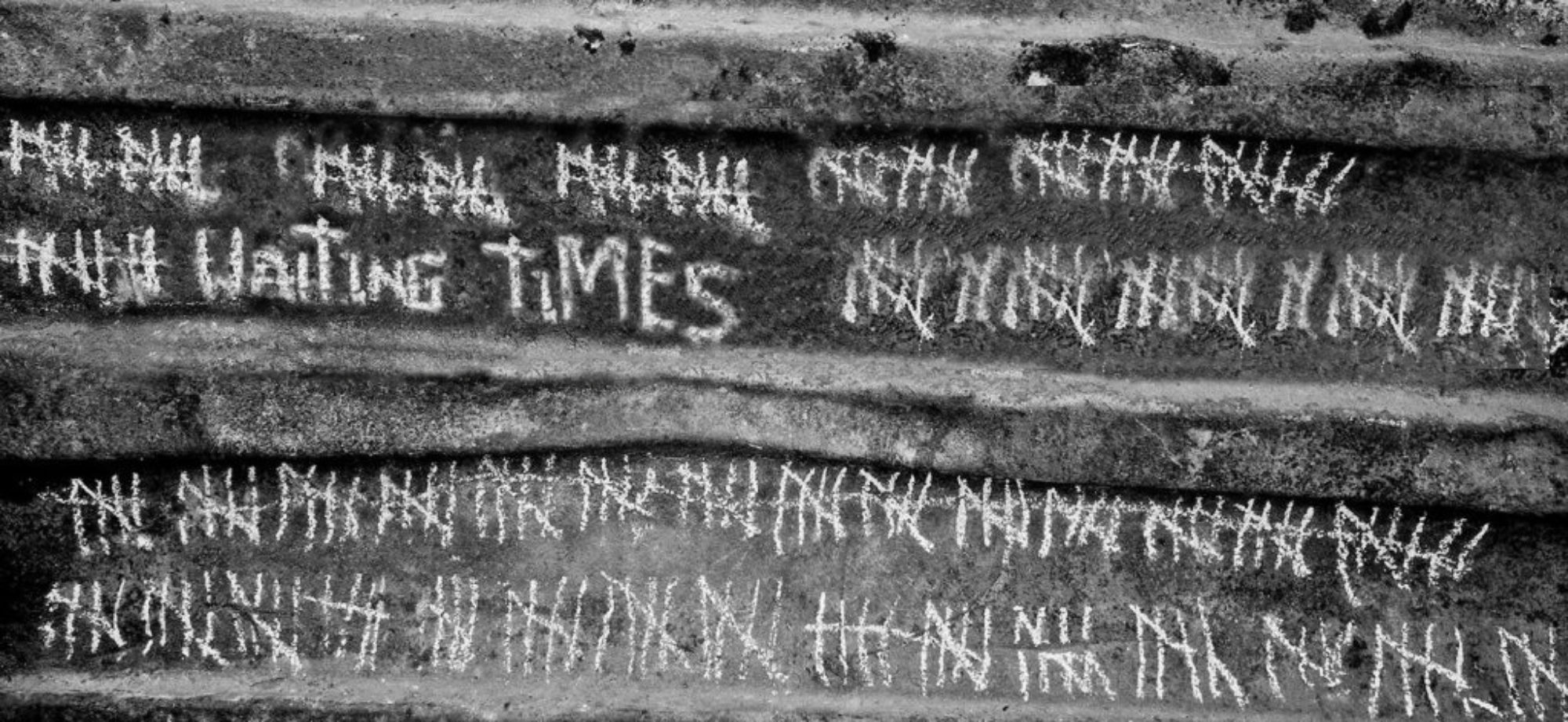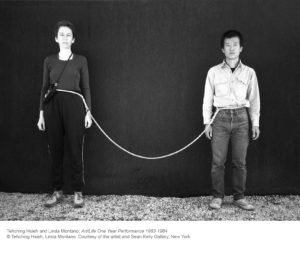The ‘telegraphic schizophrenic manner’: the (non)sense of time in psychosis and literature
Social Life of Time
University of Edinburgh, 5-7 June 2018
This paper places Kurt Vonnegut’s Slaughterhouse-5 – and specifically the ‘spasticity’ in time of its protagonist Billy Pilgrim – into conversation with: medical formulations of autonomic awareness and disruptions in the psychoses; Deleuzean and Ricoeurian theories of temporality; and first-person accounts of lived experience of psychosis. In so doing, this paper explores how disruptions in temporality can be better understood not as aberrations or pathologised failures of self-narrativising but rather as revealing, affirming and informationally rich qualities of narratives of ‘psychosis’.
Rather than temporality being presented as an authoritarian set of moral rules to which narratives (and their narrators) must adhere, this paper reconeptualises it as an aesthetic, expressive field, and one that can be experienced in panorama or in close detail to create different narrative tempos and communicate different intensities and sensations. In so doing, this paper aims at de-pathologising the disjointed ‘spasticity’ of time commonly observed in the real-life experiences of ‘psychosis’.
‘She Denied Frequent, Bothersome, or Noticeable Gas’: Boundaries of Possibilities for Patient Voices in MCRs
with Brian Hurwitz, King’s College, London
MLA International Symposium: Remembering Voices Lost
Universidade Católica Portuguesa, Lisbon, 23-25 July 2019
This paper describes and critiques the textual mechanisms through which the genre of the contemporary medical case report (MCR) constructs the figures and voices of patients. In a corpus of post-1945 MCRs (n=497) randomly sampled by decade of publication from the New England Journal of Medicine (NEJM), The Lancet, the British Medical Journal (BMJ), the British Journal of General Practice (BJGP) and BMJ Case Reports, we examine the possibilities these accounts offer and circumscribe for representing the patient. Progressing chronologically through the corpus using literary and cultural studies methodologies, we focus on the textual mechanisms through which the contemporary genre of the MCR constructs patients, and how these constructions are culturally influenced by, and redolent of, the textual methods and conditions in play in this period. We show how MCRs delineate patient subjectivities and voices, and demonstrate the means by which opportunities are missed for hearing empowered, autonomous patients by the use of formal techniques that textually silence and diminish patients’ roles in the formulation, dissemination and ownership of case-based medical knowledge.
Finding yourself waiting: a semiotician’s guide to how waiting rooms construct temporalities and identities for their waiters, and what we can do about it
European Association for the History of Medicine and Health
University of Birmingham, 27-30 August 2019
Read Martin Moore’s blog about the conference, and his and Michael’s contributions
The clinic waiting room is probably the last public space in contemporary Britain where you can be (and remain) without paying. Despite relentless, successful parallel assaults on our civic spaces and our health services, NHS waiting rooms qua temporal spaces remain under-theorised and under-analysed. This paper offers a semiotic analysis of specific waiting rooms as a forerunner – and intellectual groundwork – to proposed health interventions within these spaces.
For Schweizer (2008), the waiting room is a space and time in which the waiter is simultaneously eradicated and (re)constructed, an ‘uncanny’ (p.38) effect of sharing a Bergsonian duration with ‘accidental’ (p.31) objects:
Like the objects the waiter sees and does not see, he appears to himself once present once absent from his scene of waiting, once in exaggerated particularity, once re-absorbed into the flux of the whole. (p.31)
With a close semiotic reading of the waiting rooms of partner GP clinics, this paper offers a typology of the temporalities and identities constructed through: the built environment; the information and advice literature; the seating arrangements; the soundscapes; the time-management devices; the populations and the assortment of other objects of the waiting room.
Building on Bishop’s (2013) conceptualisation of the waiting room as the potential time-space of an ‘initiatory event’ and ‘an entrance into imaginative and experiential depth’ (p.140), this paper will explore how its semiotic analysis can be deployed to create participatory, collaborative innovations within clinical waiting rooms, to reconstruct waiters as active, empowered and creative actants within their healthcare, their polis and their lives.
References
Bishop, Peter (2013) Surveying “The Waiting Room”. Architectural Theory Review. 18:2. 135-149.
Schweizer, Harold (2008) On Waiting. New York & London: Routledge.
‘The time can be quite heavy’: collaborative story-sharing workshops on end-of-life temporalities and waiting
with Kelechi Anucha
Ageing, Illness, Care in Cultural and Literary Narrative
University of Huddersfield, 5-6 September 2019
Chronicity and Crisis: Time in the Medical Humanities
Montclair State University, 25-26 October 2019
Qualitative Research Symposium
University of Bath, 29 January 2020
I now propose the bottle as hero. Not just the bottle of gin or wine, but bottle in its older sense of container in general, a thing that holds something else. (Le Guin, 1996: 150)
As part of the Waiting Times research project (Exeter and Birkbeck), we have collaboratively developed a programme of workshops with the nurses, professional carers, volunteers and service-users of Hospiscare’s day hospice in Honiton. The project is called Messages in Bottles, using the bottle as a metaphorical (and literal) container of stories shared and created in the workshop space. We told stories together over several weeks and then presented them as a showcase for the extended hospice community (including friends, relatives, former and future service-users).
Through telling and creating together, the stories not only produced and brought into the present some past and distant narratives, but also constituted the group as a collective, embodied and time-situated narrative, responsible to each other in the sense expressed by Haraway (2016): ‘[r]esponse-ability is about both presence and absence, killing and nurturing, living and dying – and remembering who lives and who dies and how’ (28). As such, not only did we generate tales of other temporalities but we made a temporality of shared waiting in the group of the type delineated by Schweizer who, developing ideas by Simone Weil, argues that ‘to wait with the dying is not a matter of length or efficacy but of proximity and sympathy’ (Schweitzer, 2008: 89).
This paper details the work that we did and the implications it has for developing an ethics of public engaged co-created research through story-telling with those ageing or at the end of life. The paper culturally contextualises the narratives produced, analysing how they both intertextually follow and diverge from literary narratives, and their implicit models.
Importantly, our work demonstrated how such co-creation and collaboration not only flattens hierarchies of care (and between researchers and ‘participants’) but confounds and re-imagines culturally dominant narratives of the elderly and dying as othered, passive and demanding selves, presenting instead a model of agency through partnership, autonomy through interdependence and self-expression through collective work and time.
References:
Haraway D (2016) Staying with the Trouble: Making Kin in the Chthulucene. Durham and London: Duke University Press.
Le Guin U (1996) The Carrier Bag Theory of Fiction. In: Glotfelty C and Fromm H (eds) Landmarks in Literary Ecology. Athens and London: The University of Georgia Press, pp.149-.
Schweizer H (2008) On Waiting. New York and London: Routledge.
A good death? The cultural contexts of palliative care
WHO webinar, 8 October 2019


